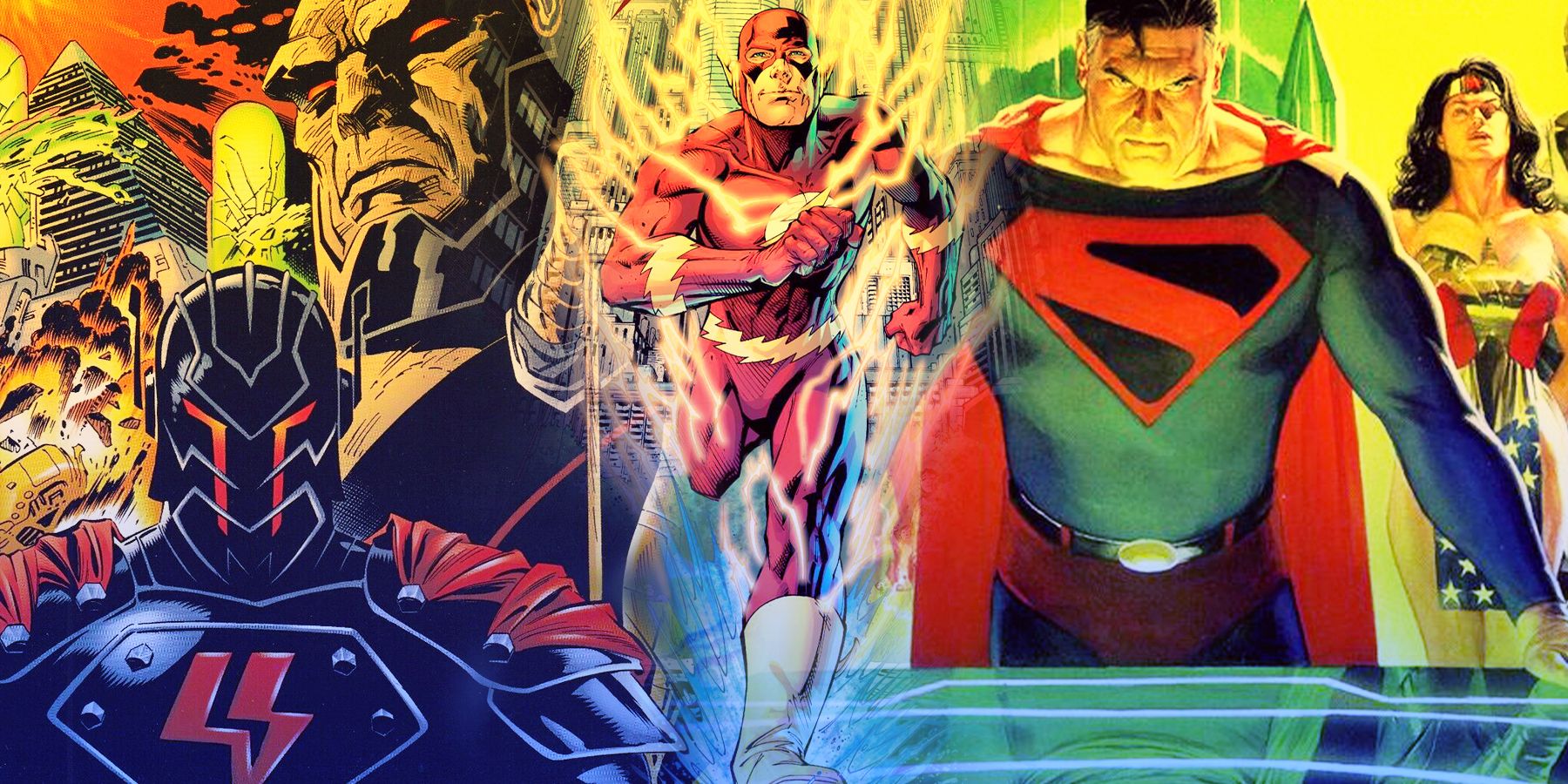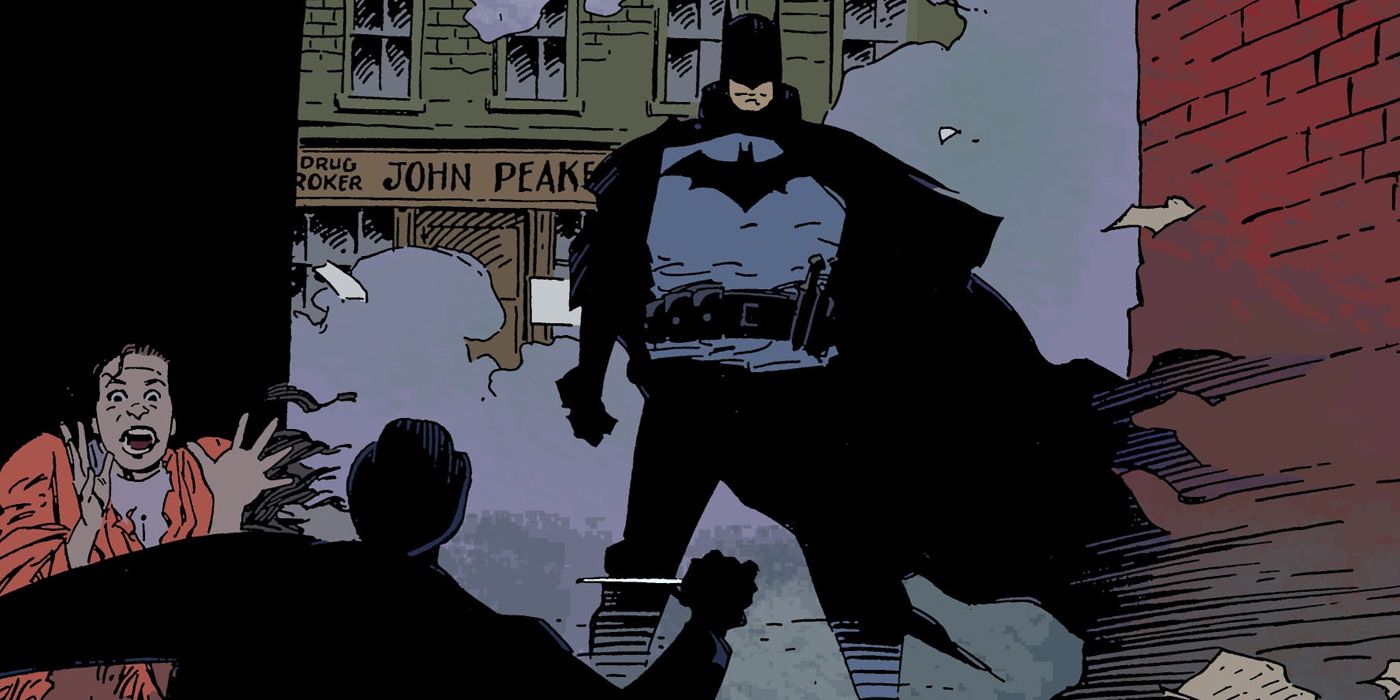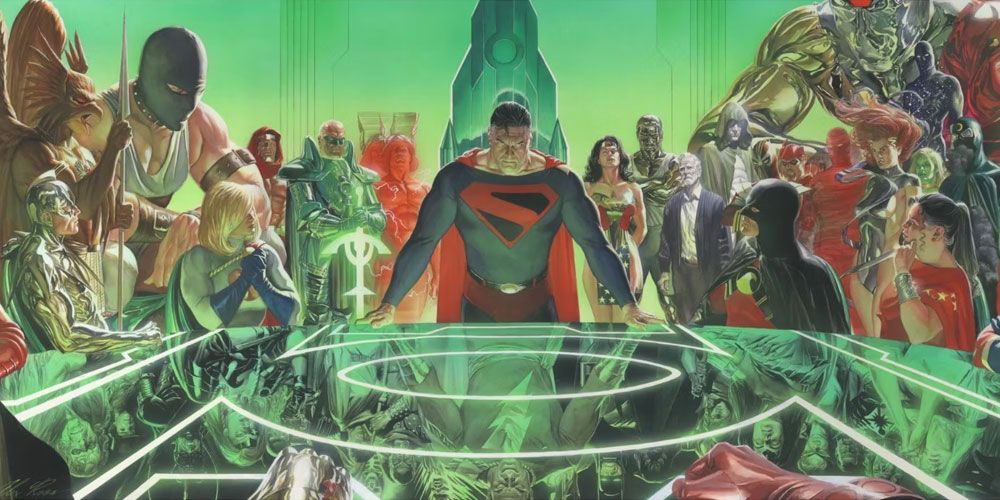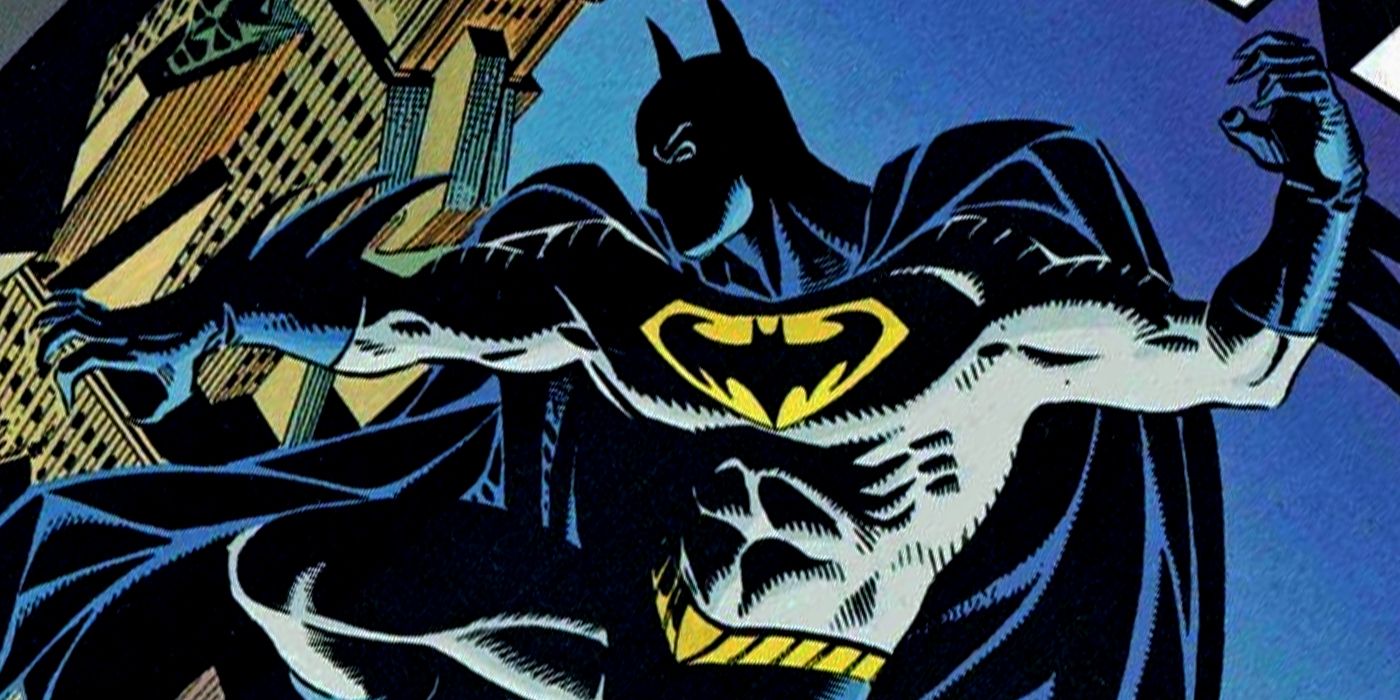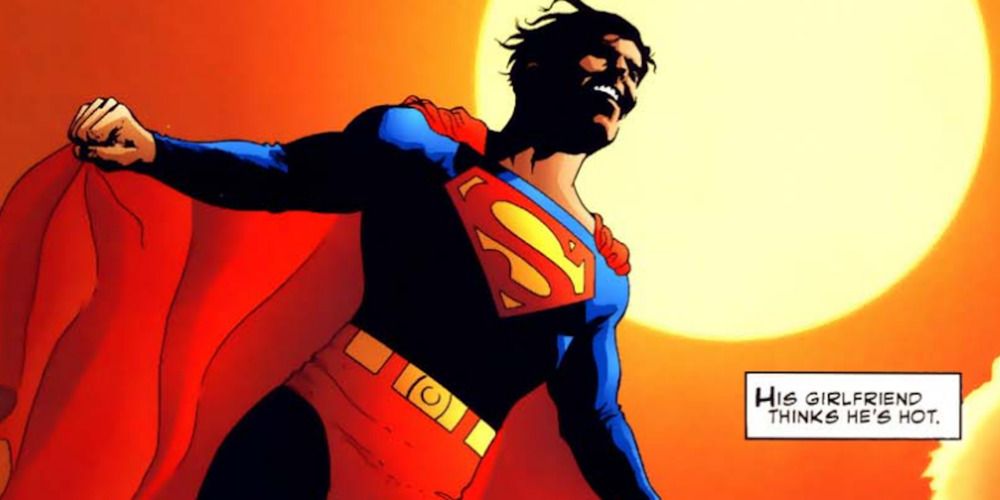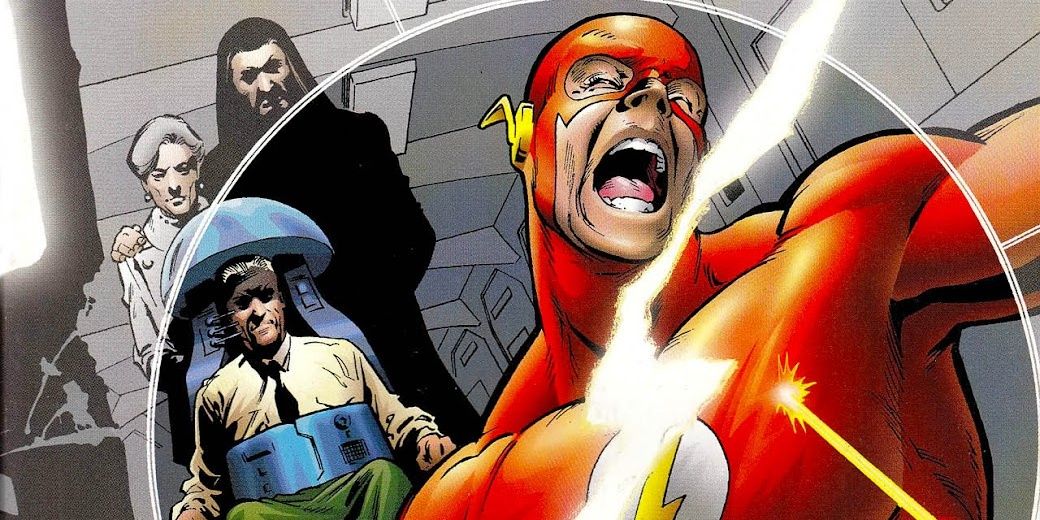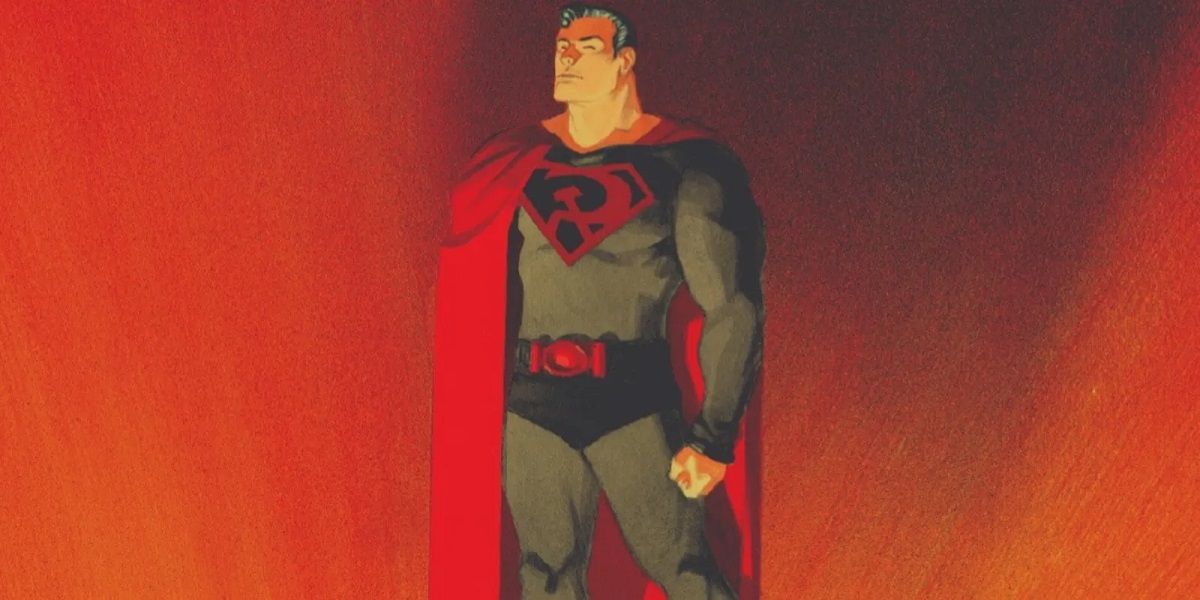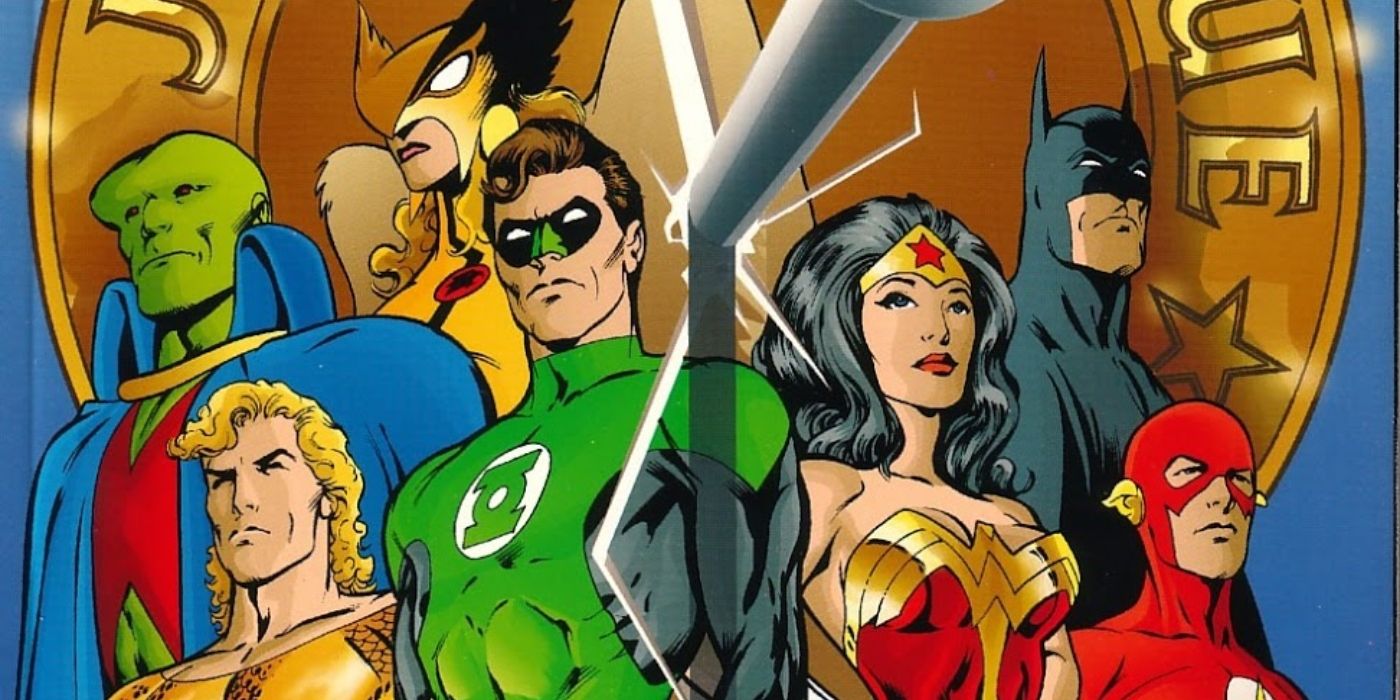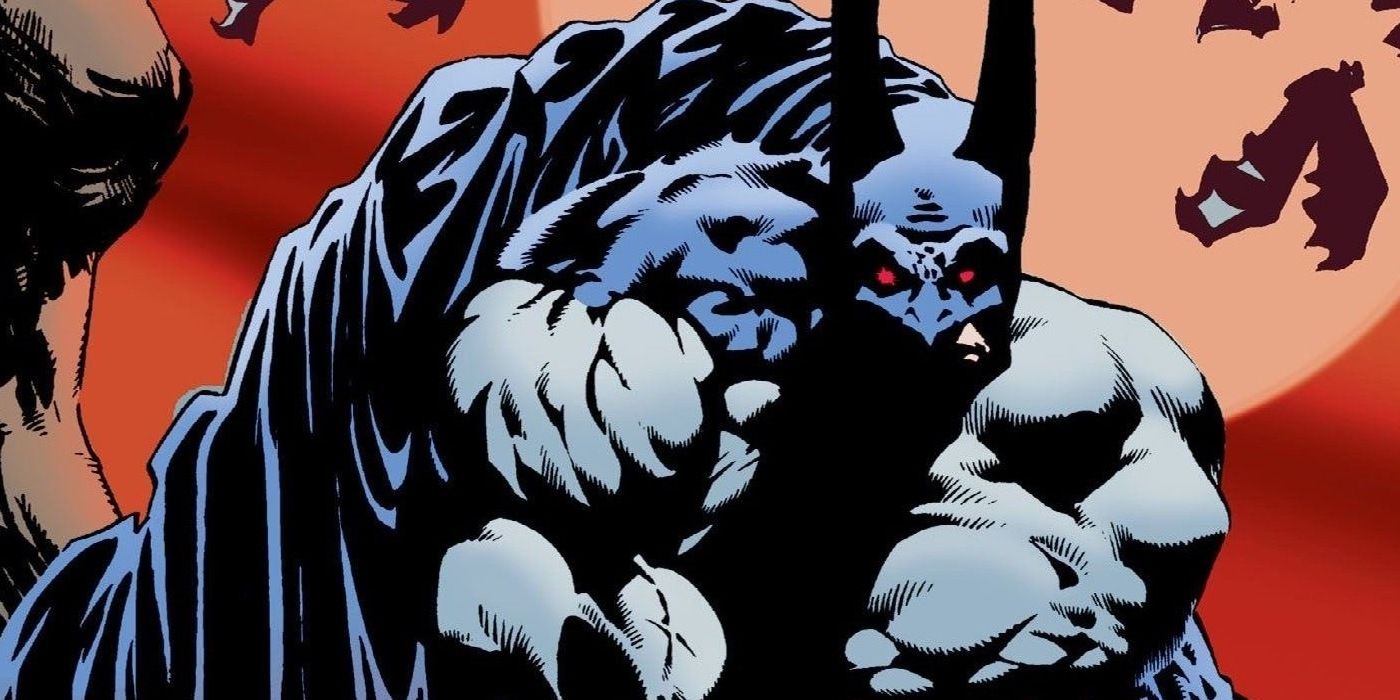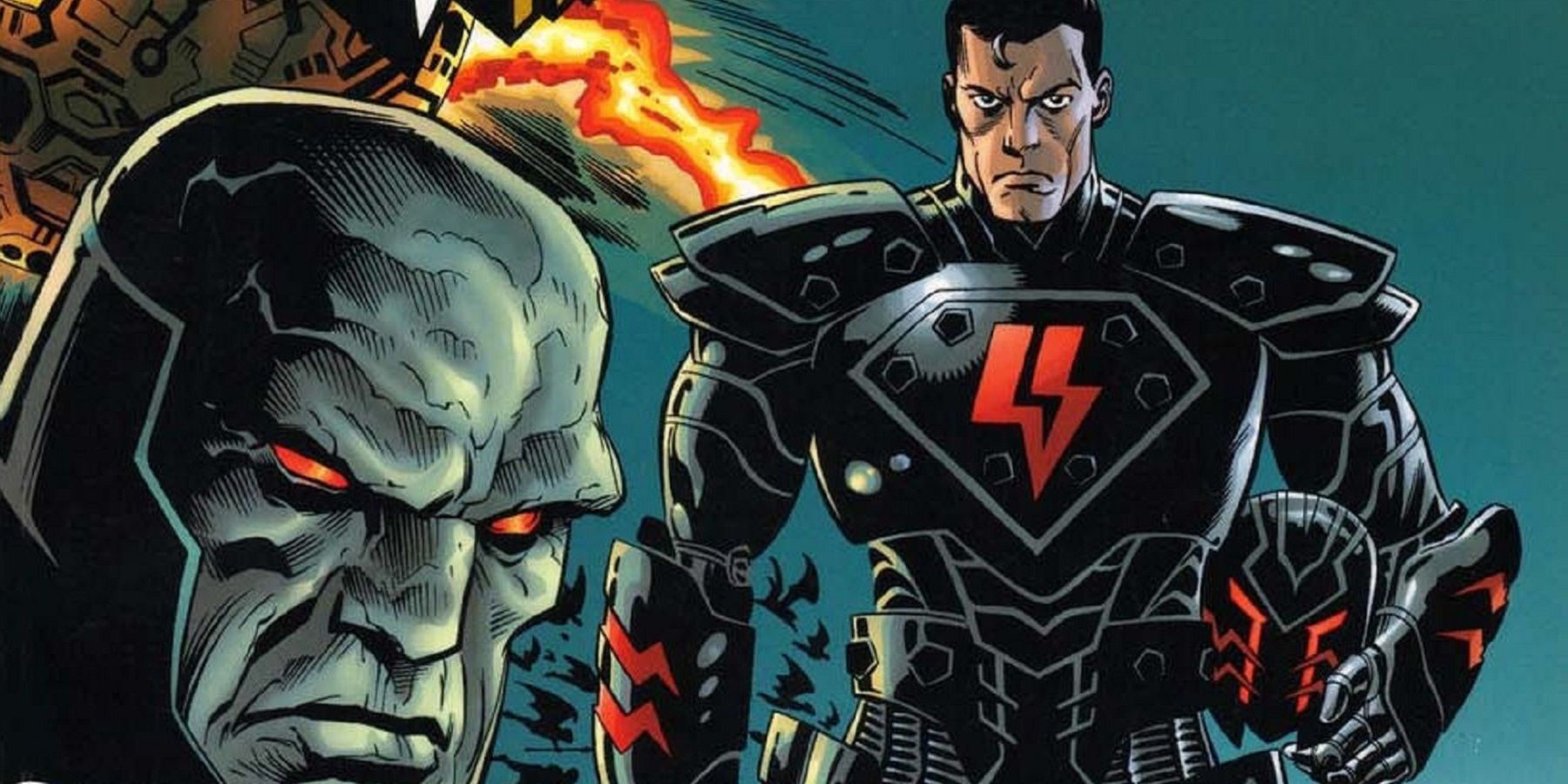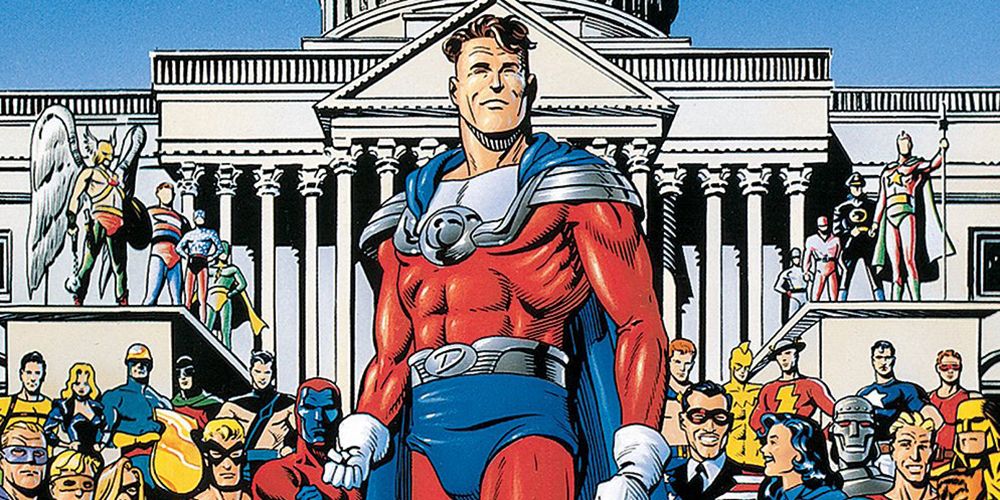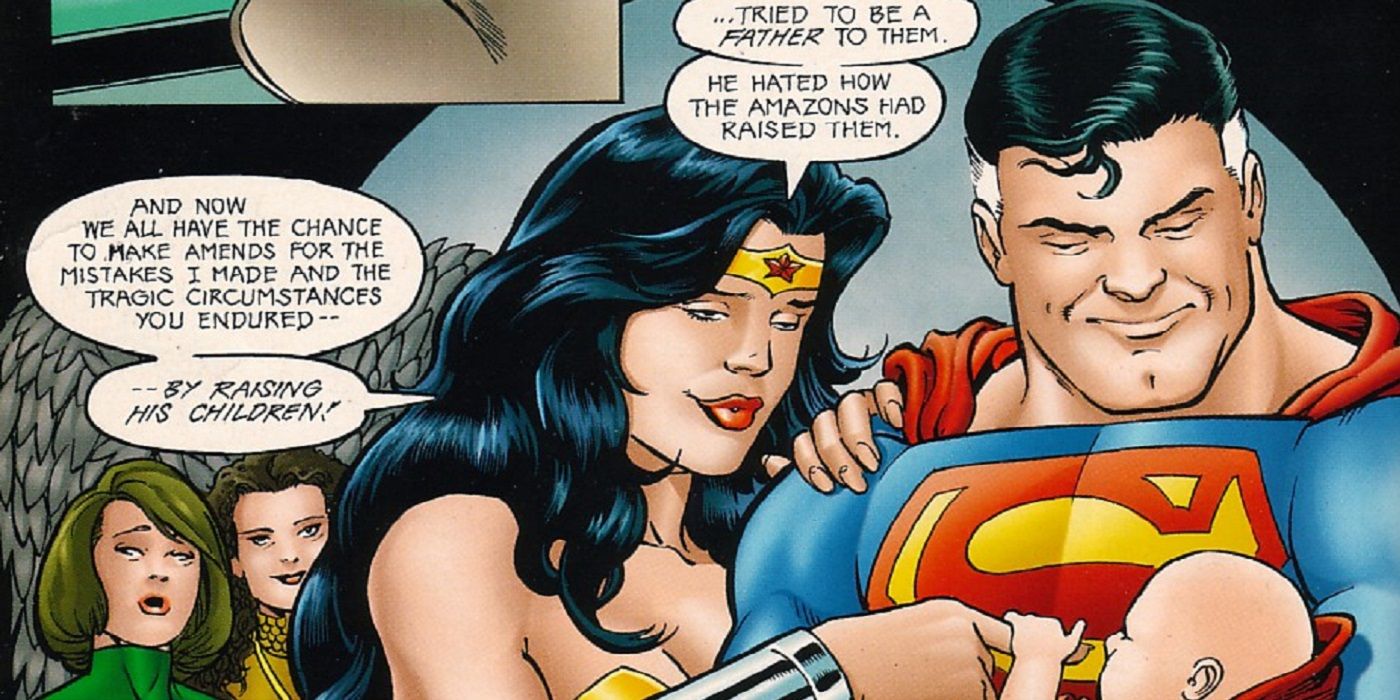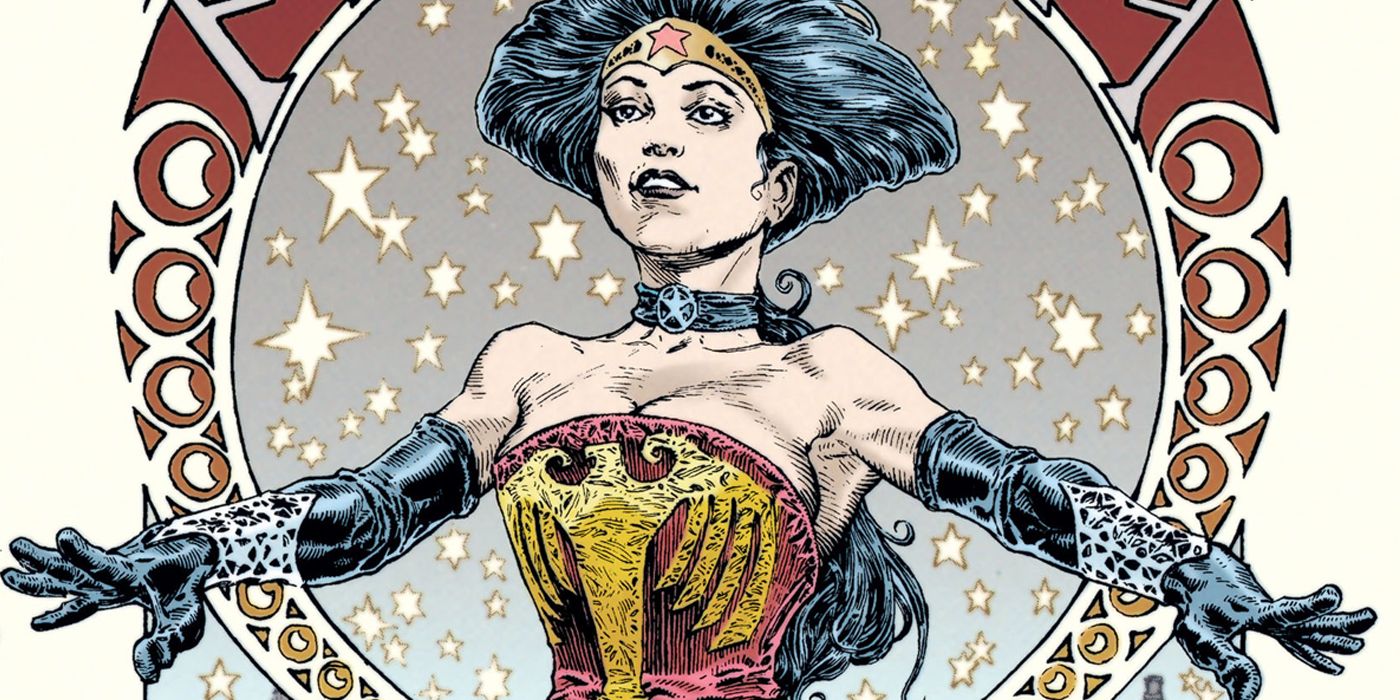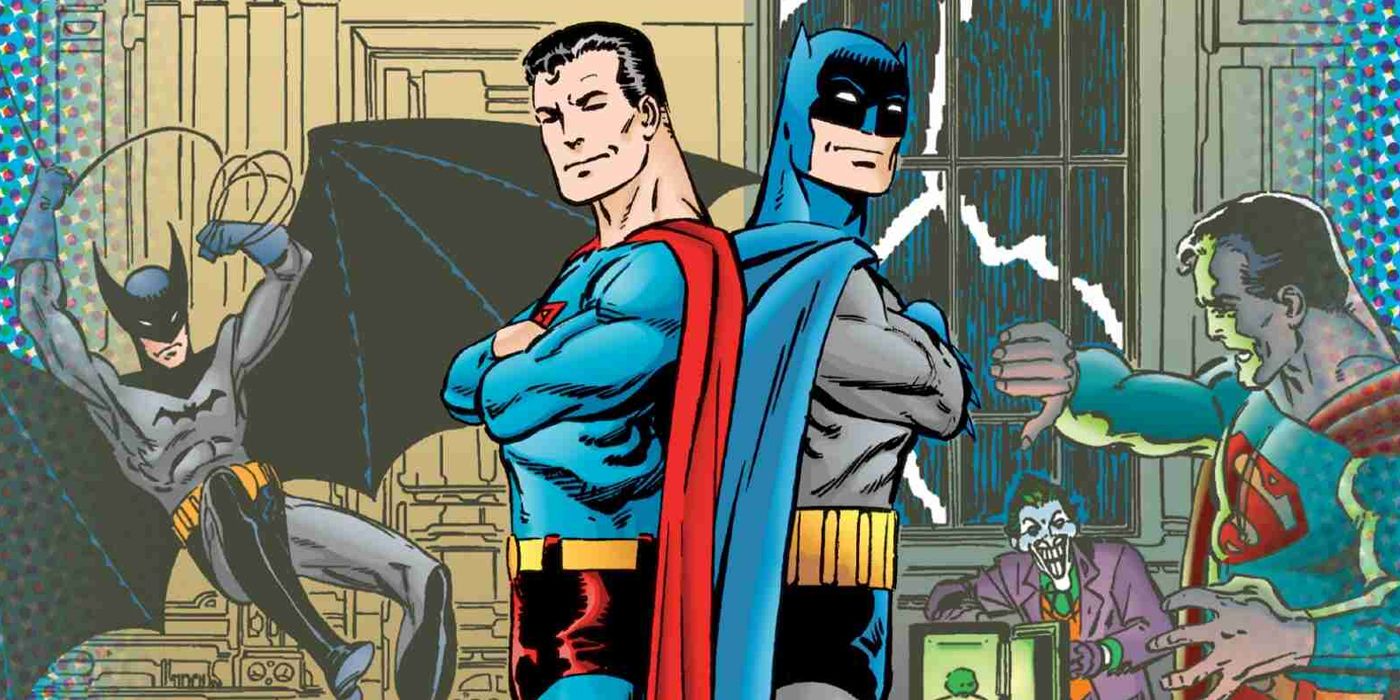Elseworlds was an imprint of DC Comics that began in 1989, with the mandate of telling stories outside of DC's regular continuity. This line produced several of America's most critically-acclaimed comics including Kingdom Come and Justice Riders, which also had a lasting influence on its superhero subjects.
Some comics introduced ideas the DC universe would later implement, while others have been popular enough to warrant spin-offs and multimedia adaptations. Due to the events of the ongoing Dark Crisis on Infinite Earths crossover, these Elseworlds stories now occupy their own parallel universes within the DC multiverse.
Updated on February 7, 2023 by Scoot Allan: Co-CEO of DC Studios James Gunn recently revealed that films like The Batman and Joker would still exist under the DC Elseworlds banner. This announcement teased the potential for even more adaptations of some of the best DC Elseworlds comics that have explored exciting alternate takes on popular heroes.
13 Gotham By Gaslight Kickstarted The Imprint
Batman: Gotham by Gaslight by writer Brian Augustyn and artist Mike Mignola (one of DC's best cover artists in the '90s) was an extra-sized one-shot that transplanted the Batman legend to the Victorian era. It pitted the Dark Knight against the mysterious serial killer known as Jack the Ripper. The tale was so successful that it launched an entire imprint.
Gotham by Gaslight established a formula repeated by several iconic Elseworlds stories. It blended a superhero's familiar mythology with elements from history and literature. An animated film adapted the comic in 2018 and it also received a comic sequel titled Batman: Master of the Future.
12 Kingdom Come Featured An Older DC Universe
After editing Gotham by Gaslight, Mark Waid went on to script the most critically-acclaimed Elseworlds comic, Kingdom Come. The limited series followed the original Justice League as they struggled to pass the torch to the next generation. The new wave of heroes and villains homaged the ultraviolent heroes of the nineties.
Created and illustrated by Alex Ross, Kingdom Come brought an end to the saga of DC's Justice League while teasing a bright new future. Its depiction of an aged Superman was most recently used in the miniseries Superman & The Authority.
11 Kal-El Became Batman In Superman: Speeding Bullets
A number of Elseworlds stories starring Superman explored worlds where Kal-El's alien rocket landed in different locations as an infant. In writer J.M. DeMatteis and artist Eduardo Barreto's Superman: Speeding Bullets one-shot, Kal-El landed near the outskirts of Gotham City. The Wayne family found him and raised him as their own.
The Waynes adopted son Bruce first manifested his Kryptonian powers when he lashed out and killed his parents' murderer. He later used his powers to become a dark vigilante and protector of Gotham City known as Batman. However, his powers made him too brutal, and he was eventually convinced by reporter Lois Lane to follow a new path as Superman.
10 Son of Superman Introduced An Alternate Jon Kent
Lois and Clark's son Jon Kent quickly became a beloved part of the DC Universe after his introduction in 2015 as one of the best versions of Superboy. A version of the character first appeared in an Elseworlds tale called Son of Superman by Howard Chaykin, David Tischman, and J.H. Williams.
In this continuity, Jon took up his father's mantle fifteen years after Superman's disappearance and led a rebellion against a far more corrupt American government. There's not a lot of similarity between the characters beyond name and parentage, but Son of Superman still warmed readers to the idea of Jon Kent.
9 The Original Flashpoint Is An Underrated Gem
The overwhelming majority of Elseworlds titles centered on either Superman or Batman. This made Pat McGreal and Norm Brefoygle's Flashpoint a welcome change of pace. The three-issue series followed Barry Allen as his world's lone hero. He was injured influencing historic events, and the Elseworlds series followed his life beginning in the 1960s as he aged in real-time.
This formula has been replicated in series such as Spider-Man: Life Story and Superman: The Space Age, which also blended superhero mythology with historical fiction. The Flashpoint title was later reused for a 2011 series that rebooted the DC Universe. However, the original Elseworlds Flashpoint was a hidden gem for Flash fans.
8 Superman: Red Son Elevated The Evil Superman Trope
The last decade saw a trend of depicting Superman as a tyrannical figure, which owes a lot to Superman: Red Son by writer Mark Millar and artists Dave Johnson and Killian Plunkett. In this universe, Kal-El landed in Communist Russia where he grew up to lead the Soviet Union to world domination.
Red Son explored the conflict between the oppressive and liberal elements of Marxism, as Superman struggled to create a socialist utopia without turning into a fascist. Red Son offered a far more sympathetic and complex take on the evil Superman trope than what it inspired in the Injustice franchise and the DCEU.
7 Justice League: The Nail Developed Without Superman
Superman's arrival on Earth has become a crucial moment in the development of the DC universe, and changes to his origins have led to huge changes in the known course of events. In writer/artist Alan Davis' Justice League: The Nail, the Kents ran over a nail and popped a tire while driving on Kansas backroads, missing their chance encounter with Kal-El's rocket.
The Justice League formed without Superman on their roster, and the Kryptonian technology from his ship ended up in the wrong hands. DC villains like the Joker used devastating alien weaponry. Jimmy Olsen also gained incredible powers and a dark Kryptonian personality as he became a powerful threat to the League. "For want of a nail," the world was almost lost.
6 The Red Rain Trilogy Popularized Vampire Batman
Batman and vampires are a natural fit, which is why the bloodsucking creatures of the night have constantly appeared in stories throughout the Dark Knight's publication history. However, the most iconic instance has to be the Elseworlds Batman: Vampire Trilogy by Dough Moench and Kelley Jones. It was originally released as Red Rain, Bloodstorm, and Crimson Mist.
These comics explored what would happen if The Dark Knight became a vampire to stop Count Dracula from threatening Gotham City. This universe has been revisited several times in events like Convergence and Countdown. The character was also a precursor to the vampire Batman that appeared in the Justice League: Gods & Monsters animated film.
5 Superman Was Raised On Apokolips In The Dark Side
The idea that Superman might become an agent of Darkseid was first explored during a Superman crossover by John Byrne, Jerry Ordway and Marv Wolfman. This time the influence worked the other way around, with John Francis Moore and Kieron Dwyer's Superman: The Dark Side imagining what would happen if Kal-El was actually raised on Apokolips.
The comic used this setup to explore the fascist associations of the "Übermensch" concept and to ultimately affirm the Man of Steel's resilience to brainwashing. Zack Snyder's planned Justice League films appear to have taken several visual and thematic cues from the series during the "Knightmare" scenes set in the DCEU's dark future.
4 DC: The Golden Age Explored The Fall Of The JSA
James Robinson and Paul Smith's DC: The Golden Age was a four-issue mini-series starring the heroes of the Justice Society of America. Set after the events of World War II, the JSA was largely forced to retire by the McCarthy hearings. A former superhero turned politician organized a new team of heroes for the modern era of the '50s while orchestrating a nefarious conspiracy.
The JSA returned to action to stop the government takeover and redeem their names before once again retiring to let the next generation take over. The Golden Age introduced a number of elements into the history of the JSA that other comic series used to bring them into continuity. It has continued to influence stories involving the JSA despite its Elsewords status.
3 JLA: Created Equal Is Similar To Y: The Last Man
Brian K. Vaughn and Pia Guerra's Y: The Last Man is one of the most critically acclaimed comics of the 2000s. Two years before it was first serialized, an Elseworlds comic called JLA: Created Equal by writer Fabian Nicieza and artist Kevin Maguire, used a very similar setup in which a virus killed all but two human males.
In this case, the survivors were Lex Luthor and Superman, who teamed up with Earth's female superheroes to maintain order following the major disruption. Created Equal was one of the earliest attempts to create an (almost) all-female Justice League, but it wouldn't be the last.
2 Amazonia Furthered The Steampunk Justice League
Wonder Woman Amazonia was written by William Messner-Loebs, one of the defining Wonder Woman writers of the post-Crisis era, and penciled by Phil Winslade. The story was set in a steampunk version of the 1920s, where one of the weirdest versions of Wonder Woman came into conflict with the era's gender-based oppression in the revised Victorian history.
Alongside characters from Batman: Gotham by Gaslight, it formed the basis of Earth-19, which contained the "Steampunk Justice League" that was further established by Dark Crisis on Infinite Earths. This world was also part of DC's Convergence crossover event and was Earth-34 in the pre-Flashpoint canon.
1 Generations Explored The Future Of The World's Finest
Writer/artist John Byrne's Superman/Batman Generations imagined what would happen if The Dark Knight and the Man of Steel aged in real-time, from their late 1930s debut and onwards. Its time span was ambitious enough to include several generations of the Wayne and Kent families.
A late '80s series by Dennis O'Neil and Joe Kubert inspired the concept with Doc Savage & The Silver Pyramid. Meanwhile, the Super-Sons had their beginning in "Imaginary Stories" from the Bronze Age. However, Byrne's series offered the most memorable exploration of the eternal relationship between Superman and Batman's families.

